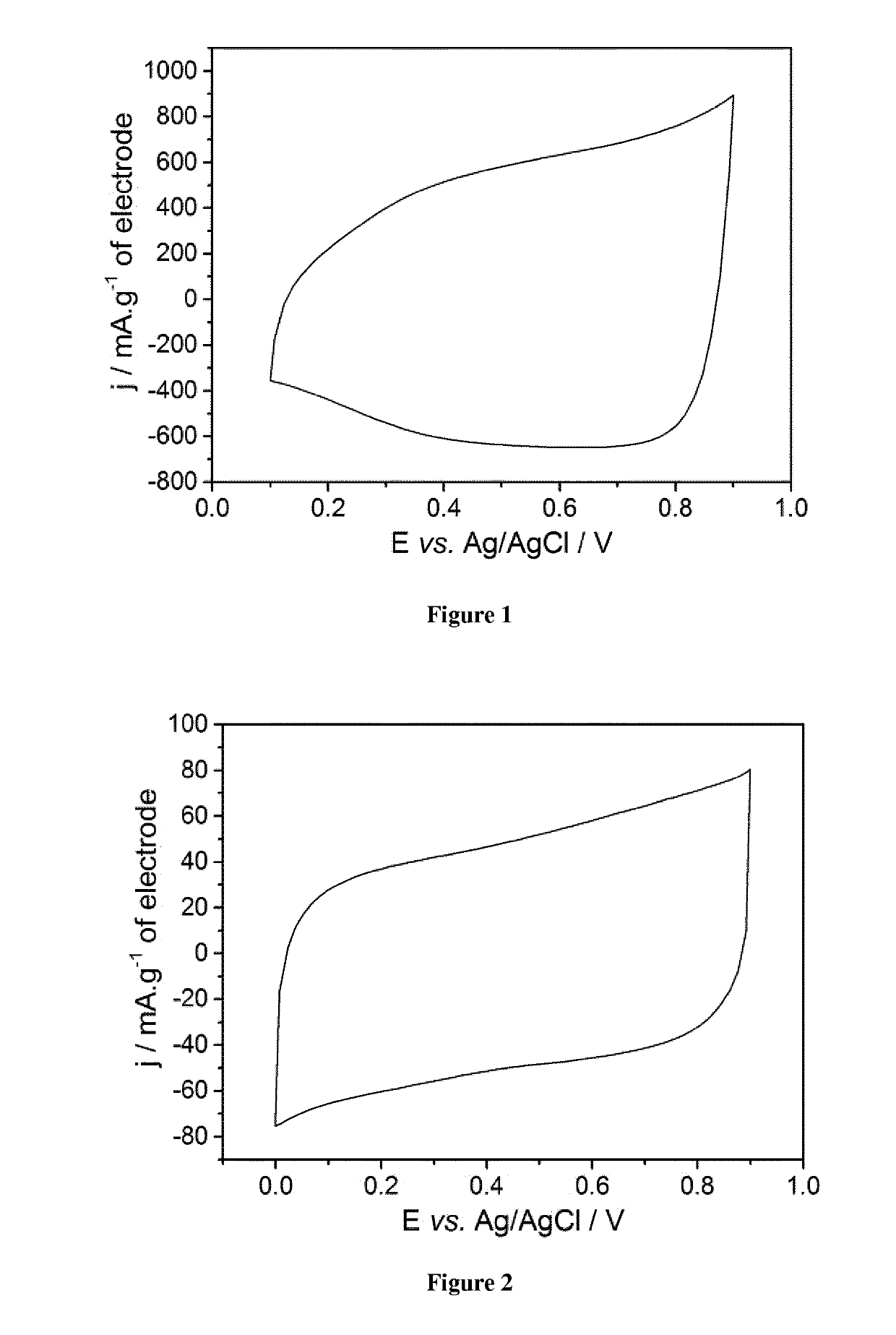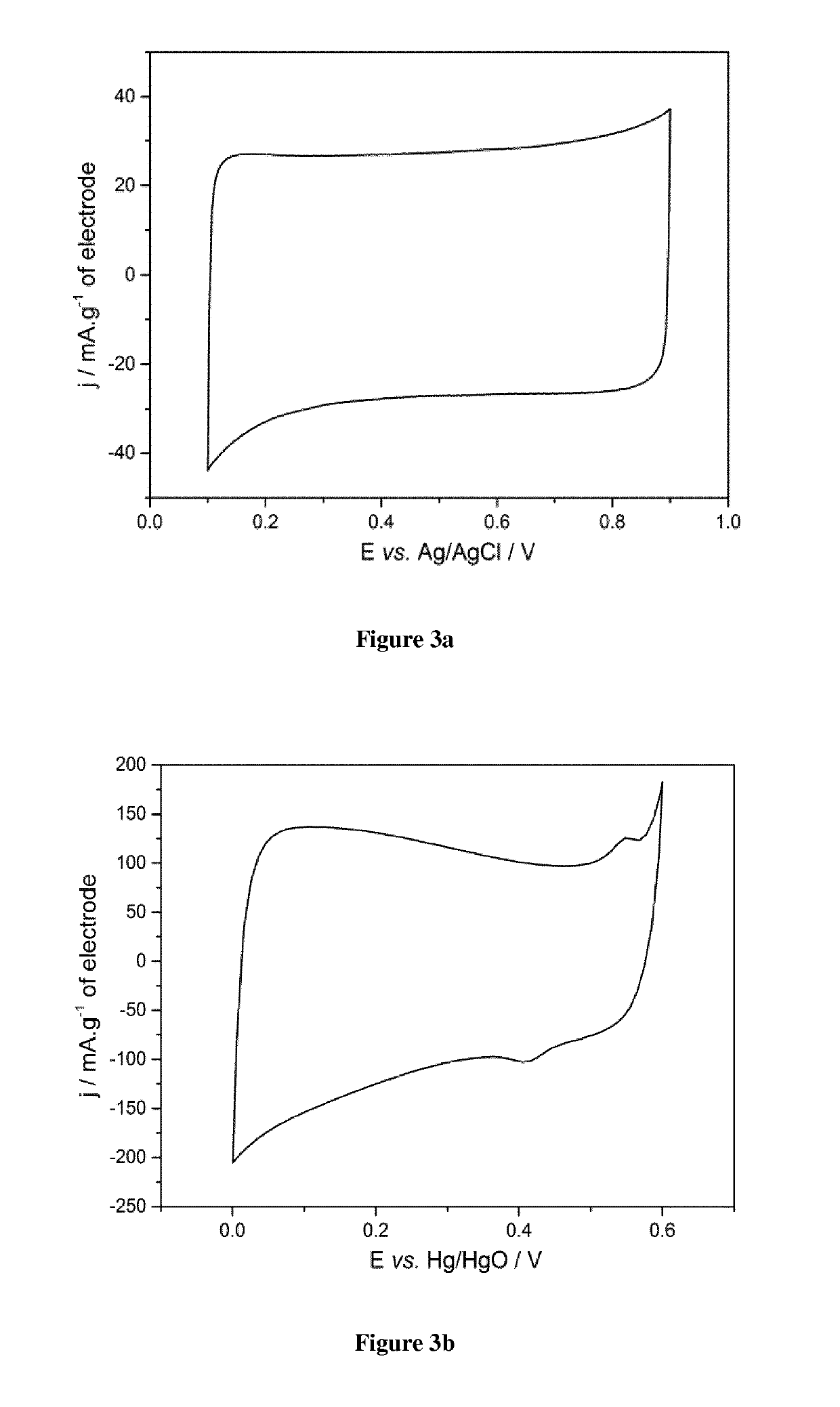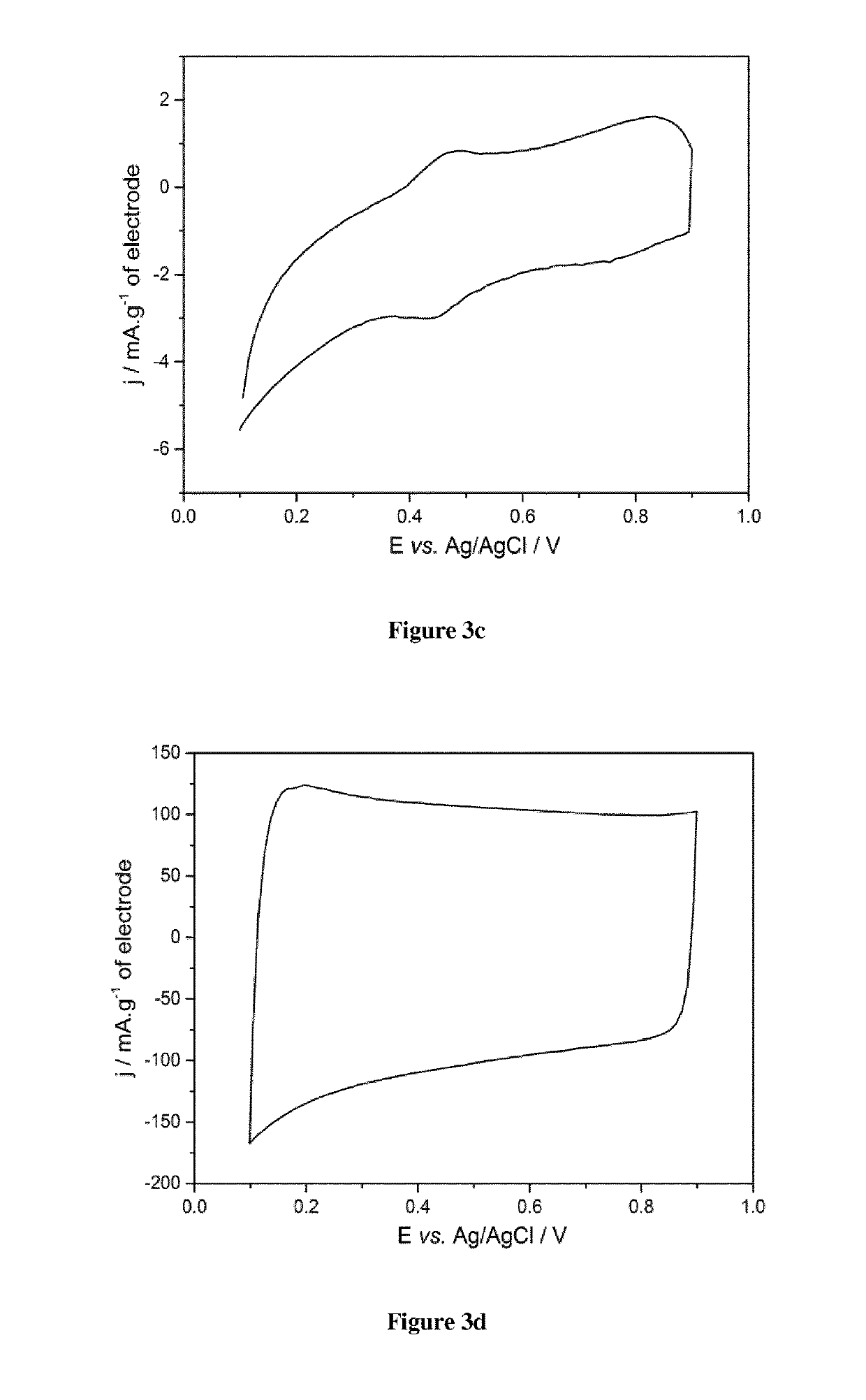Pseudocapacitive materials for supercapacitor electrodes
a supercapacitor and electrode technology, applied in the field of electrochemical supercapacitors, can solve the problems of high electrical resistivity, high energy densities of pseudocapacitors, and lower power densities, and achieve the effect of long-term cycling efficiency and fast kinetics
- Summary
- Abstract
- Description
- Claims
- Application Information
AI Technical Summary
Benefits of technology
Problems solved by technology
Method used
Image
Examples
example 1
on and Electrochemical Test of an Electrode Based on the Metal Oxide La1-xSrxCoO3 with Various x Values
[0124]1. Preparation of the Pseudocapacitive Material
[0125]Phase-pure La1-xSrxCoO3 with different x values (0.2≤x≤0.8) were synthesized via the sol-gel Pechini method as described above.
[0126]Metal nitrates and cobalt acetate were dissolved separately in small amounts of distilled water (see table 1 hereinafter for amounts).
[0127]The 3 solutions were then mixed together under magnetic stirring before adding citric acid and ethylene glycol (ratios metal cations:citric acid:ethylene glycol=1:4:12). The obtained mixture was heated at about 80° C. on a thermal plate under magnetic stirring (400 rpm) until a viscous purple gel was formed.
[0128]Calcination of the gel at 300° C. in air was performed before final heating treatment at various temperatures (700-900° C.) for 5 hours.
[0129]The amounts of citric acid and ethylene glycol are defined by the molar ratio 1:4:12 (where 1 is the numb...
PUM
| Property | Measurement | Unit |
|---|---|---|
| specific surface area | aaaaa | aaaaa |
| volumetric energy density | aaaaa | aaaaa |
| crystal structure | aaaaa | aaaaa |
Abstract
Description
Claims
Application Information
 Login to view more
Login to view more - R&D Engineer
- R&D Manager
- IP Professional
- Industry Leading Data Capabilities
- Powerful AI technology
- Patent DNA Extraction
Browse by: Latest US Patents, China's latest patents, Technical Efficacy Thesaurus, Application Domain, Technology Topic.
© 2024 PatSnap. All rights reserved.Legal|Privacy policy|Modern Slavery Act Transparency Statement|Sitemap



